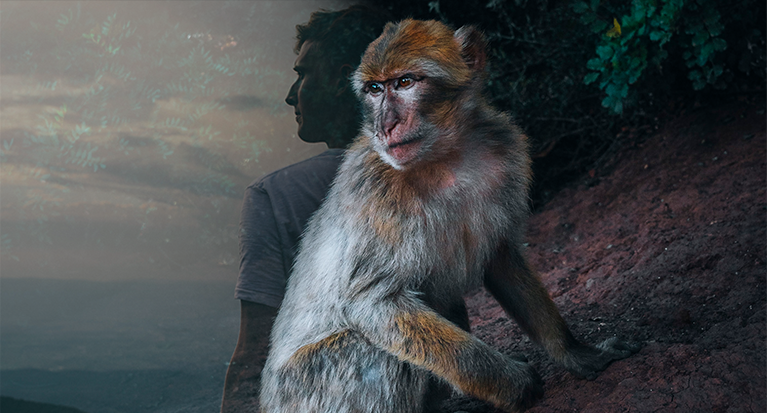Thousands of years ago, the Persians on the edges of the Indian jungles told stories of the fearsome Manticore. The beast—which they believed preferred to eat human flesh—was said to have the head of a man, the body of a lion, and the tail of a scorpion.
Generations later the Greeks believed in a fearsome monster with the head of a lion, body of a goat, and the tail of a serpent. They named the creature the Chimera, and it is from this legend that we get the modern name for hybrid organisms created by scientists.
A chimera is an organism that contains at least two different sets of DNA. In recent decades scientists have made them from assorted plants and animals. In recent years, scientists have pushed this technology into an ethical quagmire. Scientist have worked on human-animal hybrids with mice, pigs, and cows. Now, a Chinese team has created human/monkey chimeras.
The stated goal of the experiment was to solve the shortage of organs available for transplant by determining if it is possible to grow human organs in monkeys.
How did they do it? Well; simply put, they inserted human induced pluripotent stem cells generated from an adult into monkey embryos and watched to see if they would grow. It is unclear just how many monkey embryos were implanted with human stem cells, but in 132 of them, the human cells began to multiply. The scientists watched the embryos grow for 20 days before they were destroyed.
This type of research raises a host of ethical questions:
- How many human cells must be present for a life to be determined human? When does a monkey become a monkey-man? Can we kill monkey-men to harvest their organs?
- Will scientists begin to try and fuse human and monkey DNA in their experiments?
- What diseases could this research introduce to humans by creating a bridge across the species barrier?
- What happens if the monkeys develop human reproductive organs?
While this type of research is not yet at the stage of merging human and animal DNA to create a truly distinct new organism, the technology to do so exists, and experiments have already occurred. It is only a matter of time. As we warned in 2008 when stem cell researchers successfully passed an amendment to the Michigan Constitution to allow destroying human embryos for research, a lack of regulations and guidelines inevitably leads to further ethical abuses. Concerns about human-animal hybrids have been mocked in the years before such a thing was possible, and now that the impossible has become possible, the mocking turns to dismissing those with ethical objections as “anti-science” or “flat-earthers.”
In one article, Sarah Norcross, director of Progress Educational Trust said, “there is a clear need for public discussion and debate about the ethical and regulatory challenges raised.” Sadly, it is unlikely the concerns of anyone not considered a scientist will be heeded by the scientific community.
Based on observation of their behavior, it has been a long time since the sanctity of human life has been respected by many inside the scientific community, especially the leadership. Even when their fantastical promises of cures for everyone fail to materialize, the ethical boundaries that were breached are never restored, and new ethical boundaries are targeted for elimination. Is there any moral line they won’t cross involving the destruction of human life and genetic engineering?
The International Society of Stem Cell Research has broad influence in the field of biotechnology, and they are in the process of revising their guidelines to allow more experimentation on human embryos. Their previous guidelines only banned impractical experiments. Now that they can do it and they have domesticated the population into accepting the latest ethical violations, they move on to the next boundary.
With that in mind, only one question remains: how long until the creatures of legend become real?
